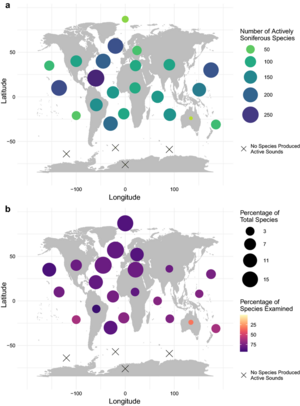Sounds in the Seas

Introduction
Sound Sources
Relevance
Art and Culture
Further Reading/Listening
Sources
- Looby, Audrey et al. "A quantitative inventory of global soniferous fish diversity", Reviews in Fish Biology and Fisheries, Vol 32, (2022).
- Duarte, Carlos et al. “The soundscape of the Anthropocene Ocean”, Science, vol. 371, (2021).
- Scheifele, P.M. et al., “Indication of a Lombard vocal response in the St. Lawrence River Beluga”, Acoustical Society of America Journal, Vol. 117, Issue 3, pp. 1486-1492, 2005.
- Tyack, Peter L. and Edward H. Miller, “Vocal Anatomy, Acoustic Communication and Echolocation”, Marine Mammal Biology: An Evolutionary Approach, (2002): 142-184.
- “Lost at sea: ocean acidification undermines larval fish orientation via altered hearing and marine soundscape modification”, Royal Society, (2016).
- Freeman, Simon E. et al., “Photosynthesis by marine algae produces sound, contributing to the daytime soundscape on coral reefs”, PLoS ONE, vol.13, issue. 10, 2018.